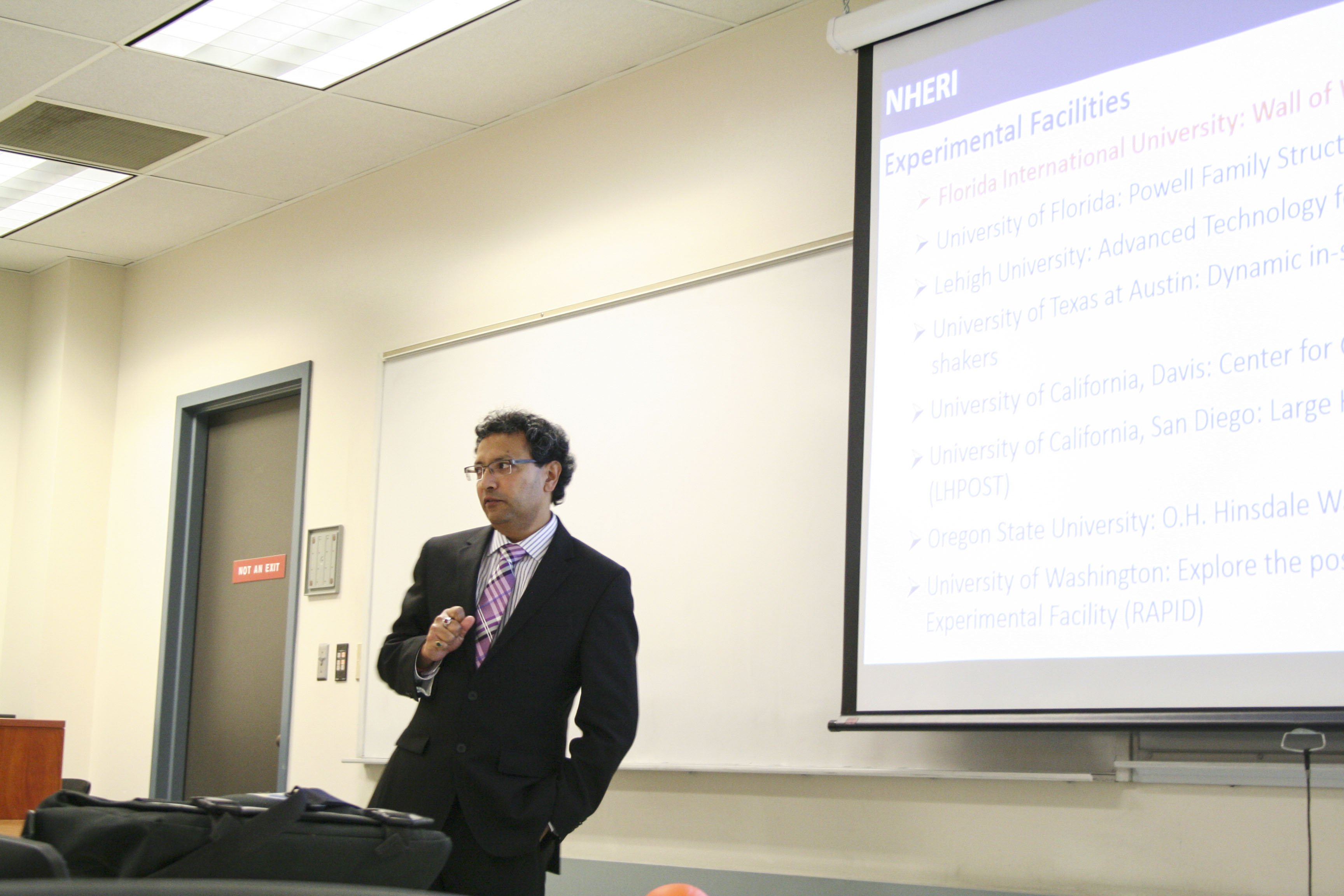FIU Looks at the Big Picture
Published on November 2, 2016
Jordan Moss, UTSA College of Engineering

With the recent damage caused by Hurricane Matthew along the east coast it is important to understand how to reduce societal damages during such events. At Florida International University (FIU) research is being conducted to help tackle these very problems. Arindam Chowdhury, director of the Laboratory of Wind Engineering Research at FIU, is working with the Wall of Wind facility to find solutions to these challenges. Chowdury says there are numerous problems that a storm like Hurricane Matthew can bring to coastal societies.
One thing would definitely be the wind impact, Chowdhury said. So we need to come up with solutions to reduce the wind load. Another problem is the effect of the wind on power outages. Thats a societal problem.
To help gain a better understanding of how to reduce the impact such storms can have, researchers at the FIU facilities are employing holistic testing(testing that takes into account how all the parts of a structure work together and react when under stress). Component testing (testing focusing on one component of a structure/infrastructure) can miss many of the potential problems that holistic testing is able to identify.
Component research does not give you all of the information, Chowdury said. They are simplistic tests that are done because there is no other facility that can do the holistic testing we can.
Chowdury noted that one problem that occurs frequently during natural disaters is cascading failures. When one system fails, the pressure from the damages is transferred to the other systems. This can set off a domino effect of failures. Only with holistic testing can researchers properly identify the potential for cascading failures in a structure.
Many components that can pass a component level test may fail in a system level tests, Chowdury said. Now you are testing it with modern infrastructure in place. For example, you can test a small section of roof tiles but that doesnt give you all the information. By testing a full-scale model of a building you get the effects on the whole system. One system failing can redistribute the load to the other systems. Look at roof tiles for example. When one goes the other tiles must take up the load. If you can prevent the failure of the first tile then perhaps you can save the whole roof.
The Wall of Wind facility is also being used to look into how to reduce the impact of storm surges.
Storm surges and flooding are another big issue that coastal communities face, Chowdhury said. There has been some research on how to use vegetation, barriers, wave breakers and even off shore wind turbines to reduce storm flooding.
By reducing storm surges and flooding, much of the recent damage caused by Hurricane Matthew could be prevented in the future. Storm surges occur when the sea level rises from the pressure and wind effects associated with storms. When sea levels raise it can be devastating for the people that live on the coastlines.
Houses along the coastlines of Georgia, North Carolina and South Carolina were recently covered in water during Hurricane Matthew, Chowdury said. The structures may not have been damaged but everything inside is gone. The goal is to find a way to reduce the damage storm surges cause.
Chowdury hopes that all of the research being conducted at FIU and at other Natural Hazards Engineering Research Infrastructure (NHERI) facilities will be of benefit to coastal societies in future storms.
The co-operation between these various NHERI facilities can be used to cover pretty much everything that we saw in (Hurricane) Matthew, Chowdury said. Everything we (NHERI) are doing as a whole will help improve coastal societies.





